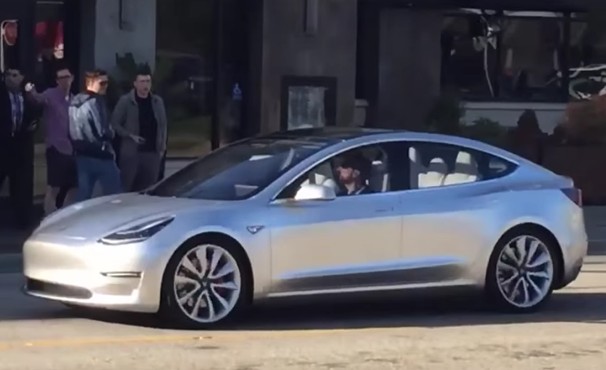The handful of mass-priced electric cars offered 200 miles or more of range scheduled to launch over the next two years will clearly bring one question to the forefront.
How much rated electric range is "enough" in a mass-market car to make North American buyers consider it sufficient for safe and flexible usage?
The 2017 Chevrolet Bolt EV, an upcoming second-generation Nissan Leaf, the Tesla Model 3, and a few other vehicles planned for 2018 or 2019 will provide some answers.
DON'T MISS: When will electric-car DC fast-charging be everywhere in the U.S.? Poll results
But we put that question out to our Twitter followers, and got a strong response that seemed to indicate 200 miles will help.
That level may be a minimum, however, as virtually none of our respondents felt that 120 miles (3 percent) or even 150 miles (7 percent) were enough.
Just over half the respondents (54 percent) felt that 200 miles would be enough to get electric cars over the hump to mass-market acceptance.
What's the minimum electric-car range required for mass acceptance?
— Green Car Reports (@GreenCarReports) August 31, 2016
But more than a third (36 percent of respondents) felt that in fact 300 miles was the necessary minimum.
Tesla is the sole maker offering cars with 200 miles of range today. In fact, every vehicle it's delivered—starting with the 2008 Roadster—has offered an EPA-rated range of at least 200 miles.
ALSO SEE: When will hydrogen fuel be everywhere in the U.S.? Poll results
On the other hand, only this year did it put on sale its first vehicle with a range of 300 miles: the Tesla Model S and Model X P100D versions, with the largest battery capacity the company has ever delivered.
And the betting is that the Bolt EV, next Leaf, and Model 3 will all be rated at least the crucial 200-mile rating, but probably no more than 10 percent above that.

2017 Chevrolet Bolt EV - 2016 Consumer Electronics Show
While four out of five U.S. vehicles cover 40 miles or fewer each day, U.S. car buyers typically buy vehicles for their most extreme use situation.
That's because across large parts of the U.S., after 70 years of low-density suburban development, a motor vehicle is required just to survive—walking or biking won't cut it, and mass transit is nonexistent or viewed with contempt.
CHECK OUT: In 2025, what percent of new cars in the U.S. will have plugs? Our poll results
So the U.S. doesn't buy "urban cars" or "city cars," but vehicles that can do anything a buyer or family may need.
And that includes sudden 3 am trips to the hospital with a sick child in the dead of winter, when an 84-mile Nissan Leaf may deliver only 50 or 55 miles in real-world usage.

Tesla Model 3 Driving on a Public Road
A 200-mile car, on the other hand, should deliver at least 140 miles even in those winter conditions.
Presumably that's enough to assuage anxious parents about the possibility of those hospital runs in an electric car.
READ THIS: Which electric car excites you the most? Our poll results
It remains clear that 200-mile electric cars won't meet all needs; the Wyoming residents who travel 70 miles to the nearest big-box store and load up the pickup truck are likely to do so for a decade or more to come.
But we wonder whether 300 miles is a "must-have" or a "nice to have" for that one-third of our respondents—and whether practical experience with a 200-mile vehicle might change that result over time.
_______________________________________













